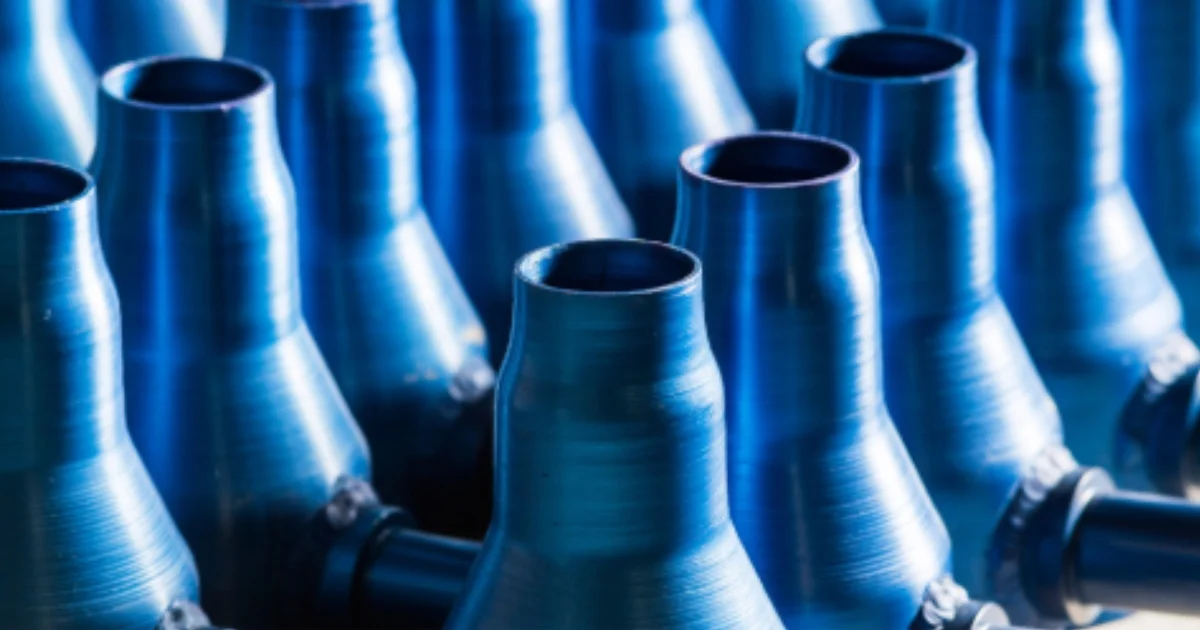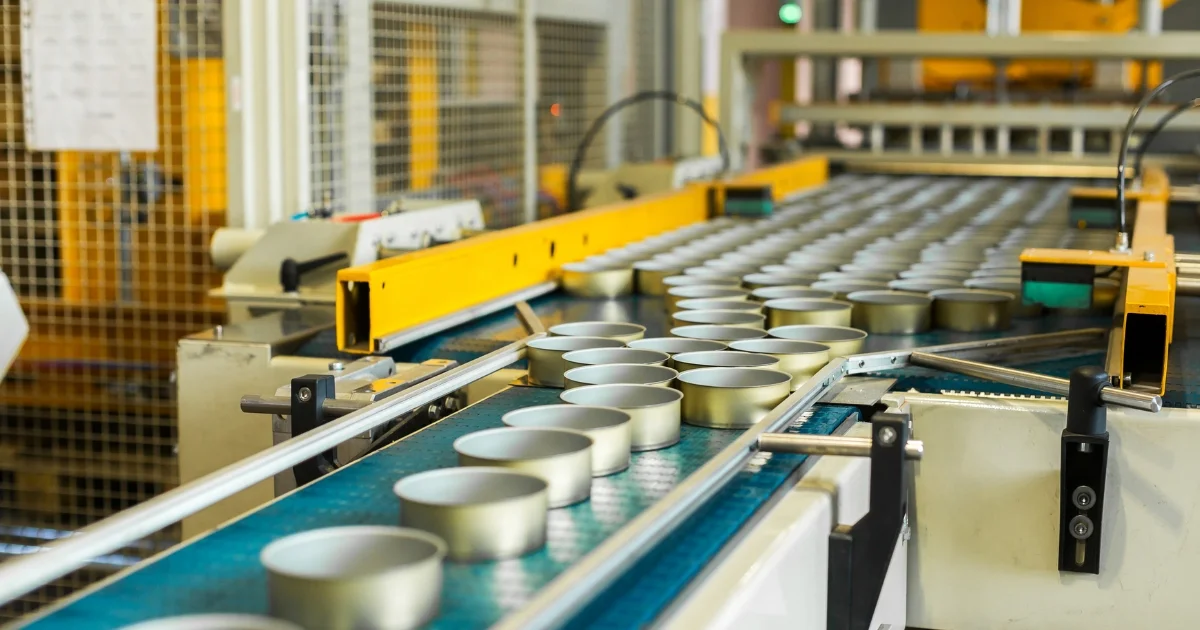
Air knives and blow off systems are crucial for preventing product contamination. These solutions use high-velocity air to remove dust, grime, dampness, and other potentially dangerous particles from surfaces.
High-efficiency production can’t come at the cost of consumer or employee safety. Fortunately, contemporary blow off systems are designed to address this challenge directly.
Here, Air Force 1 (AF1), a leading provider of blow off system solutions, will demonstrate how dust blow off is used in decontamination procedures today.
Implementations of Blow Off Systems for Dust and Decontamination
Blow off systems can be used in many different contexts to eliminate moisture, dust, and debris. Let's investigate:
Cleaning Surfaces
Blow off systems use high-velocity air streams to clear product surfaces of debris and loose particles. This is essential in food processing, electronics manufacturing, and pharmaceutical manufacturing, where cleanliness is vital.
Sanitation and Sterilization
Blow off systems, which can be employed in the drying phase after cleaning or sterilizing, are advantageous for several decontamination procedures. A calibrated blow off system offers quick and accurate drying to stop bacteria from growing on surfaces or equipment that has been cleaned or chemically treated.
Decontaminating Equipment and Packaging
Packaging has to be decontaminated to avoid potential harm across industries such as food and beverage, pharmaceutical, and medical device manufacturing. Blow off systems can be used to clean various packaging materials, including bottles, jars, and containers.
These systems remove dust, residue, or even water droplets post-washing before any container is filled or sealed. This ensures maximum hygiene and overall product safety.
Debris Removal in Hazardous Environments
Blow off systems can safely remove surface-level contaminants when working with hazardous or potentially even radioactive materials. This is critical to minimizing the possible spread of hazardous materials in sensitive facilities such as nuclear facilities, chemical plants, or even labs that handle biohazardous materials.
Blow off systems can be designed to handle even extreme conditions, providing effective decontamination, safely.
Static Elimination
Static charge can cause contaminants to cling to certain surfaces, making decontamination more difficult using other cleaning methods. However, blow off systems with an integrated static control bar (also known as an ionizing air knife) can neutralize this static charge, allowing these contaminants to be easily blown away.
This is particularly effective when it comes to decontaminating electronic components or surfaces where static electricity could actually compromise the component as well as the cleanliness.
Pre-Paint and Coating Preparation
During many manufacturing processes, including the automotive and aerospace industries, parts have to be completely free of contaminants before any painting and coating can be done. Blow off systems can be used to completely remove any dust, metal shavings, or residues – making sure that any post-painting or coating adheres properly without compromising the final product.
Designing Your Blow Off System to Fit Your Industry’s Needs
The excellent thing about blow off systems is they can be adapted and integrated to fit your industry’s unique needs and challenges. No blow off system solution is one size fits all, so you need something that is tailored to meet the needs of your business.
Let’s explore some of the applications for various blow off systems based on several industries:
Blow Off/Air Knives for the Food Industry
Blow off systems are often used in the food industry to remove particulates from various product surfaces to eliminate contamination. These systems remove dust, moisture, and other contaminants to ensure that all consumable products are not compromised during the packaging process.

How Blow off Systems Decontaminate in the Food Industry:
Cleaning the surface of food products: Blow off systems can be used to completely eliminate the presence of dust, husks, and other particulates from fresh items like produce, grains, or even bakery items. This process maintains optimal cleanliness and reduces the possibility of harm before packaging.
Package sanitization: Blow off systems can be used to clean bottles, cans, and containers before food products are added to them. This ensures that all food packaging is free of potential contaminants that could not only impact food quality, but also food safety.
Eliminating cross-contamination: One of the biggest concerns in the food industry is cross-contamination, which is typically transferred from human to product. However, blow off systems eliminate residue, powders, allergens, and other contaminants without the need for a human to touch the product. This is particularly helpful when working in facilities that have gluten-free foods.
Removing Moisture: In addition to contaminants, blow off systems can dry surfaces by removing moisture, which is important to prevent mold growth and maintain the integrity of certain food products.
Customization Options for Blow Off Systems/Air Knives Based on Industry
Blow off systems and air knives can be customized to meet a desired shape, size, and length to accommodate the unique needs of production lines. For example, wider air knives can clean larger surfaces or even multiple lanes of a conveyor belt simultaneously, maximizing efficiency and increasing production.
Here are some more specific adjustments that can be made to a system so it fits your unique industry needs:
Nozzle Adjustment
Nozzles can be adjusted to deliver high-velocity air to precise locations, ensuring more precise decontamination and dust blow off. This is particularly good in scenarios that require very intricate cleaning, such as when working with equipment that has small nooks and crevices – all without damaging delicate parts.
Material Compatibility
Blow off systems can be made from food-safe materials such as stainless steel to ensure they meet mandatory hygiene standards and can withstand the required cleaning of that respective industry. Durability and cleanliness are essential.
Control of Air Pressure and Flow
These devices can be modified to provide the right air pressure and velocity for various uses. To prevent product damage, larger debris may demand more pressure, while more delicate objects may require lower pressure.
Integration with Static Control Systems
Static accumulation, which can draw dust and other particles, is another issue in some food processing settings. By adding integrated static eliminators (such as static bars) to blow off systems, pollutants are successfully eliminated and prevented from reattaching.
How Blow Off Systems Improve the Industry Standard
Blow off systems can remove water, oil, excess coating, bugs, sawdust, dirt, and any other contaminants with high-velocity airflow. We’ve established that they’re excellent tools for eliminating dust and contamination. However, what are some of the additional perks that allow custom blow off systems to improve the industry standard?
They provide cooling and blowing currents in a way that is green and environmentally conscious. Not only this, but modern blow off systems are cost effective. These blow off systems have been recognized across several industries as being an essential tool across several applications, and this has been supported by technical support data.
As well, the modern blow off system far surpasses the use of compressed air.
The years' worth of improvements in blow off systems have been marked by increased precision, better efficiency, and ever-increasing automation. As technology continues to improve, so does its positive impact on several industries, meaning companies can have significant savings in time and money by investing in these technological advancements.
Energy Efficiency
Traditional compressed air systems are typically used at a fixed speed and air pressure – regardless of the application. This lack of adaptability can result in excessive energy consumption when the system is required to operate at a higher capacity than necessary.
However, modern blow off systems are equipped with sensors and controls that allow for real-time adjustments based on airflow and pressure requirements. This means that the systems only use the energy required, reducing energy waste and optimizing efficiency, and doing so with optimized automation.
Consistency
One of the main operational benefits of advanced blow off systems is their ability to deliver the best quality results – CONSISTENTLY. Traditional compressed air systems typically need regular, manual adjustments and constant oversight, whereas advanced, modern blow off systems can maintain an automated and highly accurate level of airflow.
The wonderful thing about consistency is that every product and surface endures the same treatment, reducing the potential for product inefficiencies and defects.
Saving Money
Advanced blow off systems can potentially reduce operational costs by optimizing energy usage, reducing downtime, eliminating the need for regular maintenance, and overall improving the industry. This increase in efficiency and production means both big and small businesses alike can save and earn by utilizing a modern blow off system.
Whether you’re just entering into your respective industry, or you’ve been in operation for a long time, myriad benefits come with having an upgraded blow off system as a part of your manufacturing process. While the initial investment may seem intimidating, the benefits and cost savings down the line are well worth it - especially when your production capability increases.
Choose Air Force 1
Air Force 1 Blow Off Systems Inc. was established in 1990. For years, our business focus has been designing and manufacturing the highest quality blower-generated blow off systems for use across several industries such as food, beverage, defense, and packaging industries.
We deliver world-class products that are patented and installed by a diverse and passionate team dedicated to helping you improve your business.

